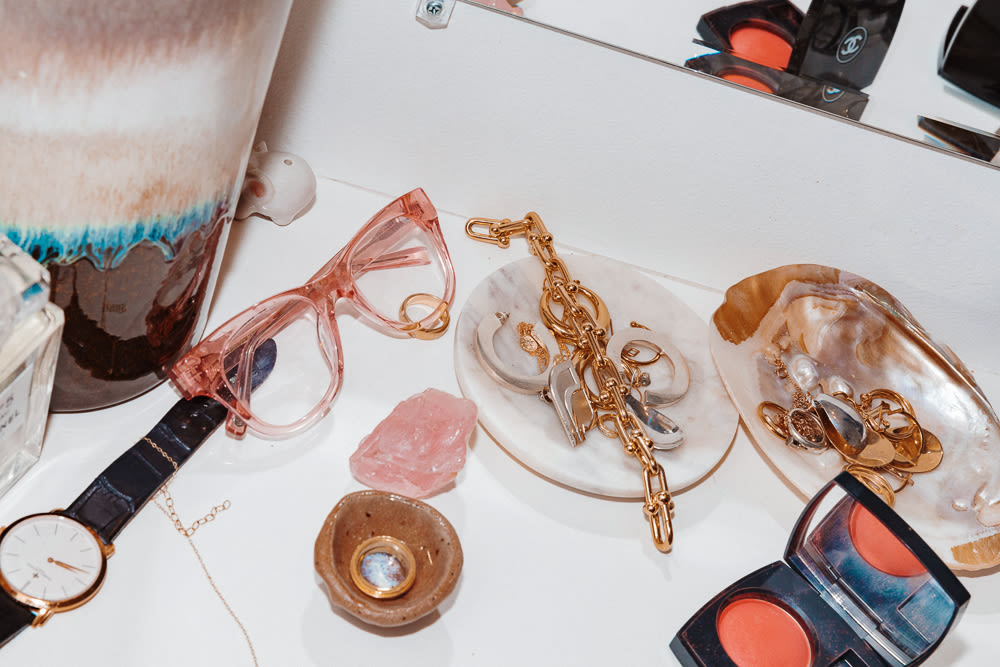
Especially for those who grew up with smartphones, it’s easy to imagine that sitting in front of a backlit LED screen all day is natural. A friendly reminder: it isn’t! The human body wasn’t built for it, and unfortunately, neither was our tech. (Computers evolved to work well and look cool, not prevent headaches and back pain. I don’t make the rules—take it up with the ghost of Steve Jobs!) Eye strain, like UV rays or not stretching, feels abstract because the issues it causes won’t onset until years after the damage is already done. But after a long day of work, my eyeballs feel more like cotton balls. You too? It’s why I called up Dr. Craig Moskowitz, a Manhattan-based ophthalmologist, with a very specific and crudely-worded inquiry: Is technology fucking up my eyesight?
The answer, it turns out, is an upsettingly resounding yes. “People stare at a computer screen for six hours a day on average, which is a 50-percent increase from years past,” said Dr. Moskowitz. He readily cited studies illustrating how nearsightedness increases with computer use and not going outside—two habits you might have picked up while working from home during a global pandemic. And if that’s not enough, there’s anecdotal evidence too. “I’ve never had so many inquiries from healthy, young people with new optical problems,” added Dr. Moskowitz, who explained his practice has experienced an uptick of patients complaining of blurriness, redness, or headaches in the past year.
God knows we’re all looking for some positive news, so here it is: The good doc is a wealth of information, and graciously shared his best tips for preventing eye strain. Let’s start at the beginning.
My eyeballs burn!
That sounds uncomfortable. Let’s get more specific.
Why are my eyes so dry all the time?
It has to do with the way we work. When your eyes are relaxed (say you’re staring straight ahead, or having a conversation with a friend) you might blink up to 22 times per minute. But when your brain is zeroed in on a task, you take from 56-percent to 72-percent fewer blinks. “You’re not blinking as much during work hours, and when you don’t blink, your eyes get dry,” explained Dr. Moskowitz. Dryness is exacerbated by contact lenses, which Dr. Moskowitz noted many of his patients have been increasingly reliant on during the COVID pandemic. “If you wear glasses with a mask, they fog up. And, people who take a lot of Zoom calls haven’t been wearing their glasses either.”
Also, I have headaches.
“Normally, your eyes look at things that are different distances away from you,” said Dr. Moskowitz. “But if you’re just staring at your computer, you’re mainly focused on something eighteen inches away.” Another factor? Working from home. Without your coworkers sitting in front of you, or around a big table in a conference room, your eyes have fewer reasons to look beyond your laptop.
I’ve been hearing a lot about blue light? Does that play a role in all of this?
It sure does. While Dr. Moskowitz emphasized that blue light doesn’t affect your retina or cause any permanent damage, it can contribute to eye strain and headaches.
Is there anything I can do?
Yup! Not only do tried and true measures to address the temporary side effects of eye strain exist, they’re absolutely critical to protect your vision for the long term.
First of all, Dr. Moskowitz underscored that, when you can go without contact lenses, you should. Eye drops or artificial tears can help soothe dry eyes, which will prevent redness and irritation from worsening. And it’s also important to take regular breaks from looking at your screen. “Following the 20-20-20 rule, every 20 minutes you’re on your computer, look off at something 20 feet away for 20 seconds,” he advised.
Many computers come with night vision settings meant to preserve your circadian rhythm (prolonged exposure to blue light can make it harder to fall asleep at night) by replacing blue light with a dim, orange glow. This is a free, easy way to alleviate some of the stress associated with consistent blue light exposure, but there’s an issue. Although your eyes aren’t straining against blue light anymore, they might need to work harder to read on a darker screen. For a bit more money, you can invest in a pair of blue light glasses. These are fitted with special, non-prescription lenses that filter out blue light wavelengths before they reach your eyes. “Those are pretty effective,” said Dr. Moskowitz, “but like anything, it depends on where you buy them.” The brand he recommends in his practice is Pixel.
Well, what if it’s too late.
My vision is already compromised!
You can still follow the advice above to prevent your eyesight from degrading further. For a more permanent solution, you might consider a vision correcting laser procedure.
The one you’ve probably heard of is Lasik. However, many ophthalmologists now consider Lasik outdated, because it’s an invasive procedure that involves making small incisions. “Your cornea is full of nerves, which you know because when you have a fleck of something in your eyes, you really feel it,” said Dr. Moskovitz. In addition to alerting you to a stray lash or piece of dust, those nerves let your brain know when your eyeballs could use a refreshing splash of moisture. “When Lasik surgery is performed, some nerves are cut and they don’t grow back.” Because you have fewer nerves you don’t blink as much, which as previously discussed, leads to dry eyes. And of course, the dryness is exacerbated by staring at the computer. “People who got Lasik in the past are probably doing even worse right now,” added Dr. Moskowitz. Sorry!
A better alternate is a vision correction procedure called ASA, or advanced surface ablation. “The technology in terms of correcting nearsightedness is the same,” says Dr. Moskowitz, “but there is no cutting involved and less tissue is impacted.” This means that if you have a high prescription that previously contraindicated you for Lasik, you may be a candidate for ASA. You’re not a good candidate if your cornea is thin, a rare condition that can be identified by your doctor. And the laser still can’t treat farsightedness, a condition where you see well at a distance but things look blurry up close. However, as Dr. Moskowitz mused, “In the world that we live in, farsightedness is much less common than nearsightedness.”
Happy scrolling!
—Ali Oshinsky
Photo via ITG



